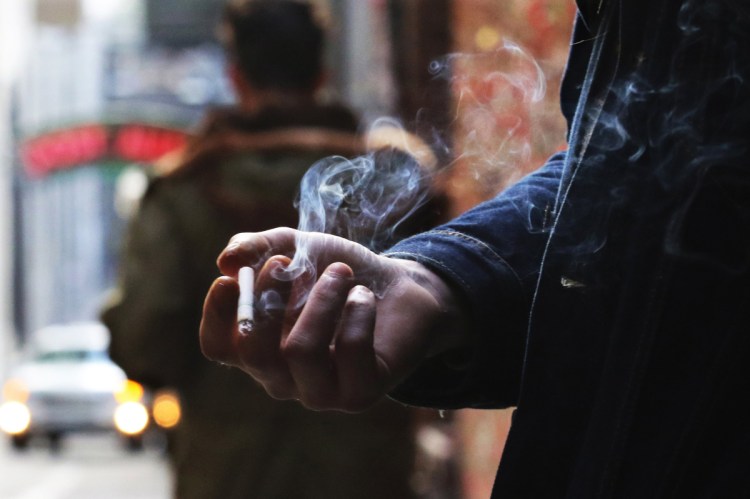Cigarette smoking is at an all-time low in the United States, but the benefits of this public health achievement are not being shared equally by all Americans.
A new analysis of health data from the nation’s 500 largest cities shows that the people who live in neighborhoods with the highest smoking rates are more likely to be poor, less likely to be white, and more likely to have chronic heart or lung diseases.
“The degree of inequity was surprising,” said study leader Eric Leas, who conducted the work as a postdoctoral scholar at the Stanford Prevention Research Center.
Smoking may be a choice, but if you want to live a long and healthy life, it’s a bad one. In the U.S., life expectancy is at least 10 years lower for smokers than for nonsmokers, and smoking is responsible for roughly 20 percent of deaths each year, according to the Centers for Disease Control and Prevention.
The U.S. surgeon general says smoking can be blamed for more than 80 percent of deaths from lung cancer (the deadliest type of cancer in the U.S.) and about 80 percent of deaths from chronic obstructive pulmonary disease (the country’s third-leading cause of death). Smokers also face increased risks of heart disease, stroke, asthma, diabetes, and at least 10 other kinds of cancer.
In 1965, when the National Center for Health Statistics began tracking tobacco use, 42 percent of U.S. adults were cigarette smokers. By 2017, that figure had declined to 14 percent.
Leas and his former colleagues from Stanford wondered how the resulting health gains were spread across the country. To find out, they examined data from the 500 Cities Project, a joint effort of the CDC and the Robert Wood Johnson Foundation that gauges health risk factors in 27,204 census tracts in America’s largest cities.
They found that smoking was more popular in some census tracts than others – and that there were certain things these census tracts had in common.
For starters, the people living in neighborhoods with higher smoking rates tended to make less money than people in neighborhoods with lower smoking rates. The researchers calculated that a $10,000 increase in a census tract’s median household income corresponded with a 0.92 percentage-point decrease in smoking prevalence.
In addition, neighborhoods with higher smoking rates were more likely to be populated by African Americans and Latinos, while the reverse was true for non-Hispanic whites. A 10 percentage-point increase in a census tract’s white population corresponded with a 0.84 percentage-point decrease in the prevalence of smoking.
The Stanford team also found that the popularity of smoking and the prevalence of diseases rose or fell in tandem. For instance, if the smoking rate in a neighborhood were to increase from 10.7 percent (the 10th percentile of all census tracts) to 27.6 percent (the 90th percentile), the prevalence of coronary heart disease would rise by 27 percent, asthma would jump by 39 percent, and chronic obstructive pulmonary disease would climb by 120 percent.
In each of the 500 cities, the researchers quantified the degree of “smoking prevalence inequity” on a scale from 0 (perfect equity) to 1 (complete inequity). All cities in the study had a score of at least 0.03, representing at least a small degree of inequity, and the bulk of them had scores between 0.1 and 0.15.
Send questions/comments to the editors.



Success. Please wait for the page to reload. If the page does not reload within 5 seconds, please refresh the page.
Enter your email and password to access comments.
Hi, to comment on stories you must . This profile is in addition to your subscription and website login.
Already have a commenting profile? .
Invalid username/password.
Please check your email to confirm and complete your registration.
Only subscribers are eligible to post comments. Please subscribe or login first for digital access. Here’s why.
Use the form below to reset your password. When you've submitted your account email, we will send an email with a reset code.